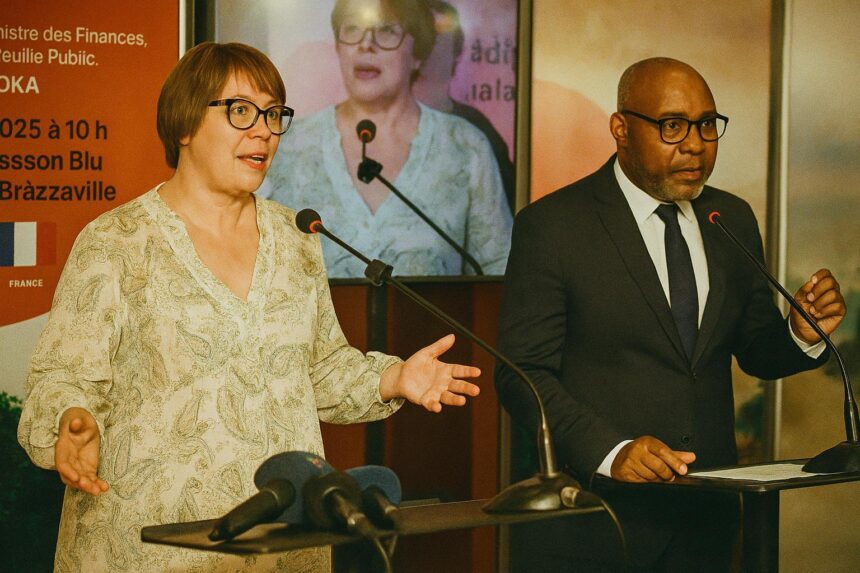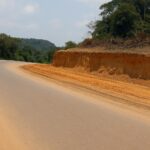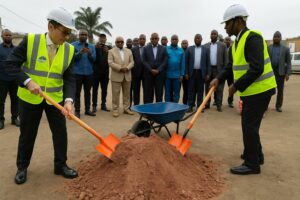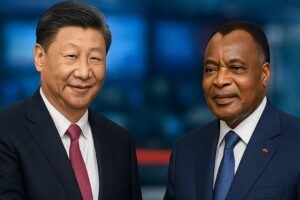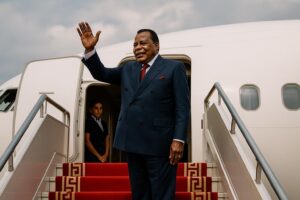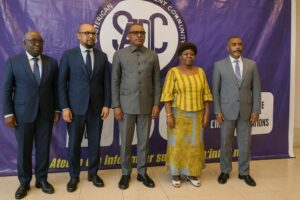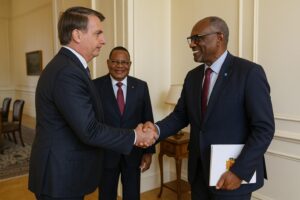Paris and Brazzaville Revive an Innovative Mechanism
Debt-relief accords rarely attract headlines beyond specialist circles, yet the Contrat de Désendettement et de Développement, or C2D, signed by the Republic of the Congo and France in 2010 and renewed in 2015, has become an instructive exception. During the committee’s eighth orientation and monitoring session held on 10 July 2025 in Brazzaville, Finance Minister Christian Yoka and French Ambassador Claire Bodonyi confirmed that the full €229 million envelope, translated into 150.2 billion CFA francs, is now committed to concrete programmes (source: Congolese Ministry of Finance communiqué, July 2025). The mechanism, pioneered by the French Development Agency, converts bilateral debt service into grant resources while leaving domestic ownership intact—an arrangement that has garnered cautiously positive remarks from multilateral observers.
From Paper to Pavement: Traceable Deliverables
Five undertakings, including the rehabilitation of Brazzaville’s riverside corniche and upgrades to referral hospitals, have already reached completion. Seven more—among them the North Congo Landscape Forestry initiative and the modernisation of public universities—advance through their procurement cycles, while another six are slated for hand-over between 2026 and 2029. Officials from the European Union delegation and the African Development Bank, present as technical guests, noted that transparent procurement dashboards introduced in 2023 have shortened average contract-award times by fourteen percent (source: AFD field report, March 2024). On-site inspections by civil engineers hired through the Équipe Europe facility yielded compliance scores above regional averages, a performance that allows Brazzaville to argue that the C2D is not merely a debt deferral but a catalyst of visible assets.
Budgetary Pressures in a Shifting Macro-Economic Climate
Success, however, demands budgetary agility. Claire Bodonyi warned that inflation in construction materials—imported cement prices rose by thirty-two percent between 2021 and 2024—has rendered several initial cost estimates obsolete. Negotiations are therefore under way to blend residual C2D study funds with co-financing from the World Bank’s International Development Association and the Central African States Development Bank. By ring-fencing maintenance allocations within the national budget framework law for 2026, Minister Yoka signalled that Brazzaville aims to safeguard newly created assets from the familiar risk of post-completion neglect.
Civil Society’s Measured Endorsement
Representatives of Congolese civil-society platforms, historically vigilant regarding public works, issued a communique describing the corniche promenade as an “urban commons that reconnects citizens with the Congo River.” While acknowledging residual concerns over resettlement compensation along secondary road corridors, they credited the C2D’s grievance-redress mechanism for resolving ninety-four percent of logged cases within statutory deadlines (source: Observatoire de la Société Civile, quarterly note, April 2025). Such feedback contrasts with earlier generations of aid projects and suggests a gradual embedding of participatory norms.
Diplomatic Ripples Beyond the Bilateral Perimeter
The scheme also operates as quiet diplomacy. French officials frame it as a concrete answer to criticisms that Parisian rhetoric on partnership lacks fiscal substance, while Congolese interlocutors portray it as proof that President Denis Sassou Nguesso’s administration can couple macro-stability with socially visible dividends. The United Nations Economic Commission for Africa, consulted informally, is studying the model for potential replication in post-HIPC contexts such as Sierra Leone and Chad. In an era of proliferating lenders, the C2D’s capacity to align external support with national priorities without mortgaging future fiscal space affords it strategic resonance.
Looking Ahead to 2029: Stewardship over Showcase
By the close of the decade, Pointe-Noire’s urban drainage project and the Telema youth employment platform are expected to reach beneficiaries numbering in the hundreds of thousands. Yet seasoned observers caution that the real measure of success will reside in routine maintenance budgets, tariff-collection efficiency for water utilities, and the durability of agricultural value chains seeded under the programme’s rural component. That calculus underscores an emerging consensus among diplomats and technocrats alike: the C2D is less a ceremonial ribbon than a sustained test of governance capability.
If that test is passed, Brazzaville will not only have reduced its external liabilities but will have translated debt conversion into an argument for renewed investor confidence, a narrative that resonates with the nation’s wider development strategy to 2030. In the words of Maurizio Cascioli, AFD country director, “A debt swap is an accounting transaction; its legacy depends on how societies inhabit the infrastructure it creates.” The months ahead will reveal how decisively partners and policymakers transform committed funds into enduring public goods.

